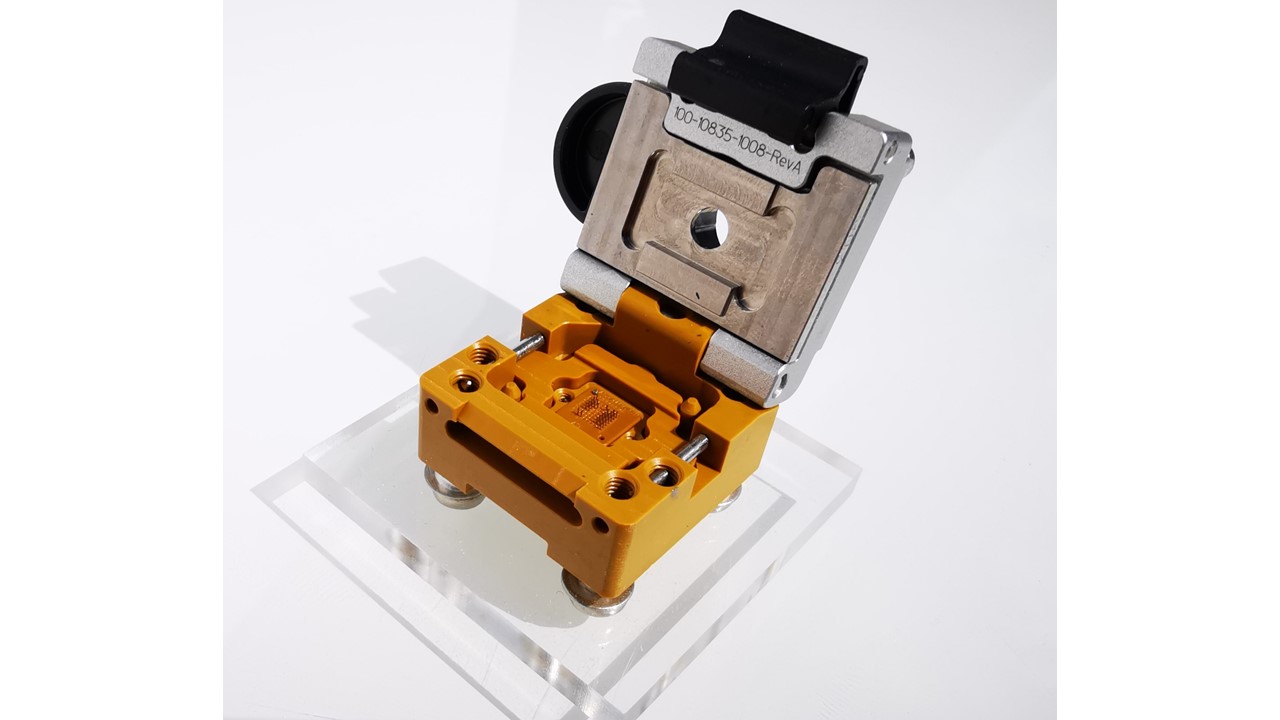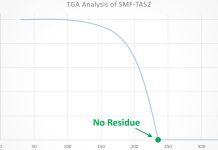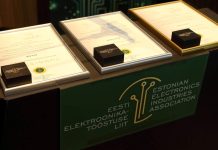At this year’s productronica, Quasys GmbH will be presenting its extensive range of test sockets and change kits for automated testing (ATE – Automated Test Equipment), in the semiconductor industry in Hall B1, Booth 146. In automated testing electronic semiconductor components are tested for functionality, electrical properties, and reliability using specialized test systems. The aim is to ensure that each component meets the specified requirements before it is further processed or delivered.
“Automated test systems play a central role in test strategies in the semiconductor industry, as they ensure the quality, reliability, and cost-effectiveness of components along the entire value chain. They enable fast, precise, and reproducible testing of electrical parameters, functionalities, and interfaces in order to detect faulty chips at an early stage of production. The later defective components are detected, the higher the costs incurred, and this must be avoided,” explains Jürgen Haap, Area Sales Manager Sockets at Quasys GmbH. The German company, a subsidiary of Swiss-based Quasys AG, supplies test components that are necessary for the precise and reliable functioning of such automated test systems. These include, in particular, test sockets and change kits, which enable stable electrical and mechanical contact between the ATE and the device under test. Through the quality and precision of these components, Quasys indirectly contributes to the measurement accuracy, reproducibility, and operational reliability of the entire test system. “Our solutions are particularly relevant in applications for life cycle testing, where contact quality and reliability of the test connection are of central importance,” Jürgen Haap continues. This must be guaranteed for all functional tests, even with sensitive components, high-frequency signals, demanding temperatures, or climate tests.
The test sockets offered by Quasys perform a key role as the mechanical and electrical interface between the test system and the device under test (DUT). “Without them, precise, reproducible, and gentle contacting of the chip would be impossible.” Depending on the type of package, such as BGA, QFN, LGA, LCC, or WLCSP, different contact elements such as spring contacts, needles, elastomers, or pogosticks are used. In addition, test sockets protect sensitive components or so-called “bare dies” from mechanical damage and electrostatic discharge during testing. The materials and contact elements used are carefully selected with regard to the test requirements in order to achieve reliable contacting and the lowest possible stress on the DUT. Especially with fine pitch distances or thin components, precisely manufactured sockets with sophisticated mechanics are crucial to achieve this with less stress as possible.
Another important aspect is the thermal management. Many sockets are used at high and/or low temperatures, as the tests must also simulate the real operating conditions of a chip. Depending on the target industry, tests at partially extreme temperatures are necessary. With such high requirements, not only the chip but also the contacting must work reliably over long periods of time and high contact cycles. In this case, the socket can be used in a temperature-controlled environment or have its own active thermal management system. The self-heating of a DUT may also be relevant and can be influenced passively or actively. In addition, modern test sockets are characterized by a high degree of flexibility in design and function and by their easy replaceability. At the same time, they are designed to withstand a high number of contact cycles without any loss of performance.
In high-frequency or mixed-signal applications, the signal behavior of the sockets plays a crucial role. Minimal signal loss through the contacts is essential for accurate and reproducible measurement results. Optimized layouts and high-quality contact materials reduce signal loss and crosstalk. “In the overall system, the test socket is the last link in the signal chain. From the test electronics to the cables and interface boards, all signals ultimately pass through the socket to the test unit. Any interference in this path can influence the measurement result, which is why the quality of the socket is a decisive factor in achieving accurate and reproducible test results,” emphasizes Haap.
There are corresponding socket variants for all special requirements, such as for very high or low temperatures for automotive/aerospace, RF applications, and 5G components in communications, active sockets for high-performance components such as processors, Kelvin sockets for precise resistance measurements, or sockets for sensors with openings for pressure, light, gas, or sound signals. This makes the test sockets an indispensable component for reliable, reproducible, and application-specific test results in semiconductor testing. Quasys now also offers the necessary change kits. These play an equally important role in the field of automated semiconductor testing. While the test socket contacts the actual component, the change kit ensures that the entire handling process runs smoothly in the automated process. This includes, for example, picking up, pre-centering/positioning, and placing in the socket. The change kit, in combination with the socket, plays a central role in the automated process. Process reliability, repeatability, and efficiency are key factors here.
The use of automated test systems is highly valued and indispensable in the semiconductor industry. This is due to the increasing complexity of modern components and the higher quality requirements in safety-critical industries such as automotive, medical technology, and aerospace. The high integration density and the demand for complete traceability require comprehensive, automated test procedures. At the same time, the strong growth in chip production for applications in electromobility, AI, 5G, and IoT has further increased the need for testing. With new materials such as SiC or GaN and complex sensor applications, testing requirements are also increasing. ATE systems are now a central component of the manufacturing and quality strategy in modern semiconductor production.
To learn more, visit www.quasys.ch










